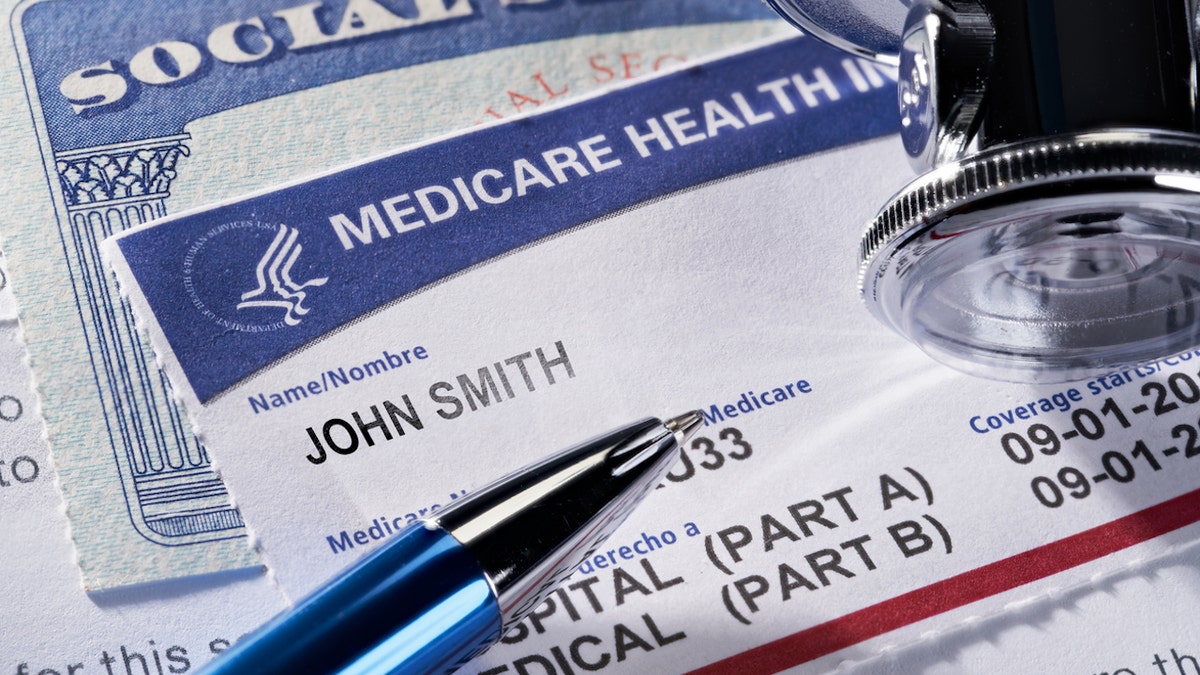Medicare has gone ‘bankrupt’ because the government has ‘screwed up’ health care: Stephen Moore
Economist Stephen Moore joins ‘Fox & Friends Weekend’ to discuss the impact of social security shortfalls on future generations.
Most Americans — more than 65% — have private health insurance, but a new report has revealed a potentially very expensive drawback.
Patients who have private (commercial) coverage may end up paying significantly more for their medical care compared to those who have public health insurance, such as Medicare, according to recent data from RAND Corp. in Washington, D.C.
As of 2022, employers and private insurance companies paid an average of 254% more for medical services than what Medicare programs would have paid.
HEALTH CARE COSTS UP TO 300% HIGHER FOR PRIVATELY INSURED PATIENTS THAN THOSE WITH MEDICARE
Several states — California, Florida, Georgia, New York, South Carolina, West Virginia, and Wisconsin — had medical costs that were more than 300% higher than Medicare prices, the report stated.
The researchers analyzed medical claims data from a "large population" of privately insured patients who were treated at over 4,000 hospitals across the country between 2020 and 2022.

Patients who have private coverage may end up paying significantly more for their medical care compared to those who have public health insurance, such as Medicare. (iStock)
The report also included the names and prices of each hospital.
"Calculating 4,000-plus U.S. hospitals’ overall relative prices has never been done before this study, because it’s so difficult to collect the requisite data and to get permissions to publish the hospital and health system names associated with each relative price," said Brian Briscombe, a health care analyst at RAND and one of the study authors, to Fox News Digital.
AS CHOLERA CASES RISE WORLDWIDE, HEALTH OFFICIALS SOUND 'CONCERNING' ALARM ABOUT VACCINE SHORTAGES
"This is real price transparency — naming the hospitals and presenting their overall relative prices in a way that anyone could understand."
The report gives employers a tool they can use to become "better-informed purchasers" of health care services, Peter Hussey, director of RAND Health Care in Santa Monica, California, noted in a news release.
"Hospitals account for the largest share of health care spending in the U.S., so this report also provides valuable information that may aid policymakers interested in curbing health care costs," Hussey also said in the release.

The researchers analyzed medical claims data from a "large population" of privately insured patients who were treated at more than 4,000 hospitals across the country between 2020 and 2022. (iStock)
The wide variance of prices across hospitals is the most important takeaway, according to Briscombe.
"Within a single city, you can find a hospital that (on average across all its services) charges privately insured patients about twice as much as Medicare charges for those same services — but down the street, another hospital charges three times what Medicare charges," he told Fox News Digital.
The difference in prices cannot be explained by differences in quality, he added.
"This is real price transparency — naming the hospitals and presenting their overall relative prices in a way that anyone could understand."
Dr. Brett Osborn, a Florida neurologist and longevity expert, was not involved in the RAND study but said the findings are "concerning."
"Hospitals bill private insurers multiples of the Medicare allowable," he told Fox News Digital.
"The elevated costs are passed onto patients, resulting in higher premiums and out-of-pocket expenses."

As of 2022, employers and private insurance companies paid an average of 254% more for medical services than what Medicare programs would have paid, according to a new study. (iStock)
And these costs are on the rise, Osborn warned.
"People accept job offers because the employer offers health insurance — otherwise, for many, the premiums would be unaffordable," he added.
Osborn emphasized the significant price variations among states.
SOME PATIENTS WHO SEE FEMALE DOCTORS COULD LIVE LONGER, STUDY SUGGESTS: ‘HIGHER EMPATHY’
"Hospitals in some states charge less than 200% of Medicare rates, while others exceed 300%," he said.
"Due to its size, Medicare can negotiate lower payments — but private insurers lack this leverage."
"This discrepancy is due to some hospitals' market power, making it hard for employers to avoid them. Due to its size, Medicare can negotiate lower payments — but private insurers lack this leverage."
The doctor also called for greater price transparency from hospitals.

The new report published the names and pricing models of more than 4,000 U.S. hospitals. (iStock)
"Despite a federal rule for price transparency, only 24.5% of hospitals comply — highlighting the need for informed health care purchasing and policy changes to manage costs," he said.
"The system is fundamentally flawed, designed to profit from illness rather than promote health," Osborn continued.
"It clearly favors hospital systems, not the patients, reinforcing the harsh reality: There is money in the sick."
HEALTH CARE IS ‘OVERWHELMINGLY COMPLEX’ FOR OLDER ADULTS, EXPERTS SAY: ‘EVER-INCREASING HURDLE’
Dr. Marc Siegel, clinical professor of medicine at NYU Langone Medical Center and a Fox News medical contributor, said the issue of price variations is complex.
"Sometimes these are hidden costs, and sometimes hospitals and other health organizations know they can get away with charging private insurers more while obscuring prices from both the insurer and the patient to help compensate for the shrinking reimbursements from public insurances," Siegel told Fox News Digital.
"At the same time, more out-of-pocket costs are transferred to the consumer in terms of copays and deductibles, as middlemen take the profits."
"The system is fundamentally flawed, designed to profit from illness rather than promote health."
With the lack of price transparency, there is no way to introduce competition, Siegel said, as the true costs and prices are hidden.
The study did have some limitations, the researchers acknowledged.
CLICK HERE TO SIGN UP FOR OUR HEALTH NEWSLETTER
"We didn’t have sufficient claims data to publish all U.S. hospitals’ relative prices," Briscombe told Fox News Digital.
"Some states in the U.S. don’t have All Payor Claims Databases (APCDs), so we have to collect claims from one data contributor at a time – usually from employers that operate in that location and whose employees and dependents use those hospitals."

"Despite a federal rule for price transparency, only 24.5% of hospitals comply, highlighting the need for informed health care purchasing and policy changes to manage costs," according to a doctor who spoke with Fox News Digital. (iStock)
Overall, he said, the researchers had a "sufficiently large sample of data" to estimate the overall relative price of each hospital and health system included in the report, Briscombe said, "but it would be nice to have even more claims data in order to publish the relative prices for all U.S. hospitals."
CLICK HERE TO GET THE FOX NEWS APP
Molly Smith, group vice president for policy for the American Hospital Association, claimed that RAND's hospital price report represents less than 2% of overall hospital spending.
"This offers a skewed and incomplete picture of hospital spending," Smith, who is based in Washington, D.C., said in a statement sent to Fox News Digital.

"More out-of-pocket costs are transferred to the consumer in terms of copays and deductibles, as middlemen take the profits," a doctor said. (iStock)
The report also doesn't account for the "hidden influence of commercial insurers in driving up health care costs for patients," she added.
"The RAND study only underscores what we already know — that hospitals are chronically underpaid for Medicare services," said Smith.
Fox News Digital reached out to the Centers for Medicare & Medicaid Services requesting comment.


